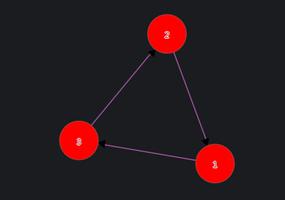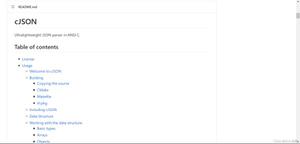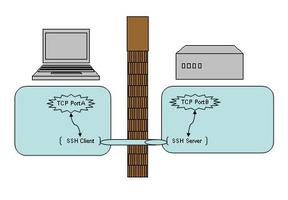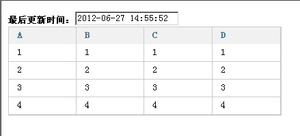根据动态JSON数据更新力导向图上的链接
我是D3的新手,正在研究json数据是动态的强制图。我能够在接收到新数据后更改力图,但这会产生弹跳效果。创建我的力图的代码是:
<div class="graph"></div><script>
var w = 660,
h = 700,
r = 10;
var vis = d3.select(".graph")
.append("svg:svg")
.attr("width", w)
.attr("height", h)
.attr("pointer-events", "all")
.append('svg:g')
.call(d3.behavior.zoom().on("zoom", redraw))
.append('svg:g');
vis.append('svg:rect')
.attr('width', w)
.attr('height', h)
.attr('fill', 'rgba(1,1,1,0)');
function redraw() {
console.log("here", d3.event.translate, d3.event.scale);
vis.attr("transform", "translate(" + d3.event.translate + ")" +
" scale(" + d3.event.scale + ")");
};
var force = d3.layout.force()
.gravity(.05)
.charge(-200)
.linkDistance( 260 )
.size([w, h]);
var svg = d3.select(".text")
.append("svg")
.attr("width", w)
.attr("height", h);
d3.json(graph, function(json) {
var nodeList = json.nodes;
var link = vis.selectAll("line")
.data(json.links)
.enter()
.append("line")
.attr("stroke-opacity", function(d) {
if(d.label == 'is a') {
return '0.8';
} else {
return '0.2';
};
})
.attr("stroke-width", function(d) {
if(d.value !== null) {
return d.value;
} else {
return 2;
};
})
.style("stroke", function(d) {
if(d.color !== null) {
return d.color;
};
})
.on("mouseover", function() {
d3.select(this)
.style("stroke", "#999999")
.attr("stroke-opacity", "1.0");
})
.on("mouseout", function() {
d3.select(this)
.style("stroke", function(d) {
if(d.color !== null) {
return d.color;
};
})
.attr("stroke-opacity", function(d) {
if(d.label == 'is a') {
return '0.8';
} else {
return '0.2';
};
})
});
link.append("title")
.text(function(d) { return d.label } );
var node = vis.selectAll("g.node")
.data(json.nodes)
.enter()
.append("svg:g")
.attr("class","node")
.call(force.drag);
node.append("svg:circle")
.attr("r", function(d) {
if (d.size > 0) {
return 10+(d.size*2);
} else {
return 10;
}
})
.attr("id", function(d) { return "Node;"+d.id; } )
.style("fill", function(d) {
if(d.style == 'filled') {
return d.color;
};
})
.style("stroke", function(d) {
if(d.style !== 'filled') {
return d.color;
};
})
.style("stroke-width", "2")
.on("mouseover", function() {
d3.select(this).style("fill", "#999");
fade(.1);
})
.on("mouseout", function(d) {
if (d.style == 'filled') {
d3.select(this).style("fill",d.color);fade(1);
} else {
d3.select(this).style("stroke",d.color);
d3.select(this).style("fill","black");
}
fade(1);
});
node.append("title")
.text(function(d) { return d.Location; } );
force.nodes(json.nodes)
.links(json.links)
.on("tick", tick)
.alpha(1)
.start();
function tick() {
node.attr("cx", function(d) { return d.x; })
.attr("cy", function(d) { return d.y; })
.attr("transform", function(d) {
return "translate(" + d.x + "," + d.y + ")";
});
link.attr("x1", function(d) { return d.source.x; })
.attr("y1", function(d) { return d.source.y; })
.attr("x2", function(d) { return d.target.x; })
.attr("y2", function(d) { return d.target.y; });
}
});
</script>
我可以通过再次调用整个函数来在接收到新的json字符串时创建新图。这将创建一个新图代替旧图。接收到值后,我无法使用新的值集更新旧图;我图中的节点没有改变,只是它们之间的关系改变了。
我确实偶然发现了一个示例(http://bl.ocks.org/1095795),其中删除并重新创建了一个新节点,但是实现有些不同。
任何指针或帮助将不胜感激。
回答:
好吧,我可以找到浏览解决方案的方法,并将其发布在此处,以供需要此主题的任何人使用。这个想法是创建图的对象,并处理节点和链接数组。JS代码如下:
var graph;function myGraph(el) {
// Add and remove elements on the graph object
this.addNode = function (id) {
nodes.push({"id":id});
update();
};
this.removeNode = function (id) {
var i = 0;
var n = findNode(id);
while (i < links.length) {
if ((links[i]['source'] == n)||(links[i]['target'] == n))
{
links.splice(i,1);
}
else i++;
}
nodes.splice(findNodeIndex(id),1);
update();
};
this.removeLink = function (source,target){
for(var i=0;i<links.length;i++)
{
if(links[i].source.id == source && links[i].target.id == target)
{
links.splice(i,1);
break;
}
}
update();
};
this.removeallLinks = function(){
links.splice(0,links.length);
update();
};
this.removeAllNodes = function(){
nodes.splice(0,links.length);
update();
};
this.addLink = function (source, target, value) {
links.push({"source":findNode(source),"target":findNode(target),"value":value});
update();
};
var findNode = function(id) {
for (var i in nodes) {
if (nodes[i]["id"] === id) return nodes[i];};
};
var findNodeIndex = function(id) {
for (var i=0;i<nodes.length;i++) {
if (nodes[i].id==id){
return i;
}
};
};
// set up the D3 visualisation in the specified element
var w = 500,
h = 500;
var vis = d3.select("#svgdiv")
.append("svg:svg")
.attr("width", w)
.attr("height", h)
.attr("id","svg")
.attr("pointer-events", "all")
.attr("viewBox","0 0 "+w+" "+h)
.attr("perserveAspectRatio","xMinYMid")
.append('svg:g');
var force = d3.layout.force();
var nodes = force.nodes(),
links = force.links();
var update = function () {
var link = vis.selectAll("line")
.data(links, function(d) {
return d.source.id + "-" + d.target.id;
});
link.enter().append("line")
.attr("id",function(d){return d.source.id + "-" + d.target.id;})
.attr("class","link");
link.append("title")
.text(function(d){
return d.value;
});
link.exit().remove();
var node = vis.selectAll("g.node")
.data(nodes, function(d) {
return d.id;});
var nodeEnter = node.enter().append("g")
.attr("class", "node")
.call(force.drag);
nodeEnter.append("svg:circle")
.attr("r", 16)
.attr("id",function(d) { return "Node;"+d.id;})
.attr("class","nodeStrokeClass");
nodeEnter.append("svg:text")
.attr("class","textClass")
.text( function(d){return d.id;}) ;
node.exit().remove();
force.on("tick", function() {
node.attr("transform", function(d) { return "translate(" + d.x + "," + d.y + ")"; });
link.attr("x1", function(d) { return d.source.x; })
.attr("y1", function(d) { return d.source.y; })
.attr("x2", function(d) { return d.target.x; })
.attr("y2", function(d) { return d.target.y; });
});
// Restart the force layout.
force
.gravity(.05)
.distance(50)
.linkDistance( 50 )
.size([w, h])
.start();
};
// Make it all go
update();
}
function drawGraph()
{
graph = new myGraph("#svgdiv");
graph.addNode('A');
graph.addNode('B');
graph.addNode('C');
graph.addLink('A','B','10');
graph.addLink('A','C','8');
graph.addLink('B','C','15');
}
以上是 根据动态JSON数据更新力导向图上的链接 的全部内容, 来源链接: utcz.com/qa/415258.html









